
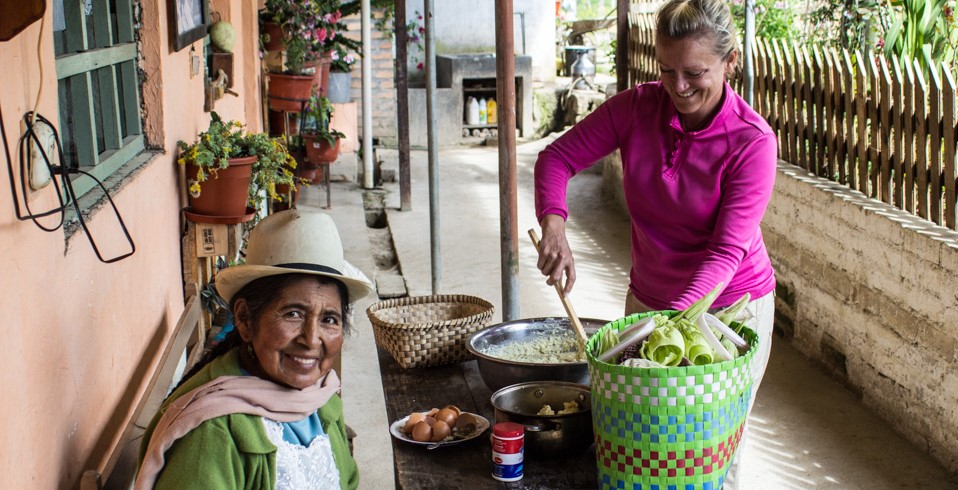
Ecuador
May 15 - June 28, 2017
May 15 - June 28, 2017
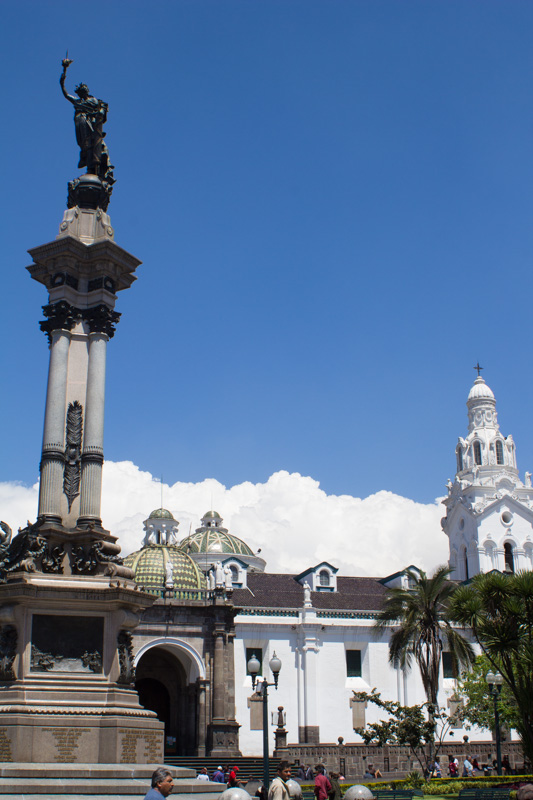
We have been in Ecuador for more than a month and have not been disappointed. Our last trip to Ecuador was seven years ago and we have seen major infrastructure improvements that have been made with the government that recently completed its tenure.
Quito, the capital of Ecuador, has a new airport that includes a major connecting freeway. Rush hour traffic in Quito is no fun but construction of an underground subway has begun. Ecuador is a poor country but it is certainly not in a dire economic condition. The children are well dressed, public transportation is good and it is hard to encounter the abject poverty that can be seen in Africa or Haiti. One of the changes to provide long term economic stability to Ecuador was the conversion to use the U.S. dollar as its currency. Ecuadorian products, like food and labor, are extremely inexpensive.
The colonial section of Quito remains picturesque with its government buildings and cathedrals. We spent two nights in Quito enjoying the sights, food and acclimatizing to the altitude (9,350’ above sea level). For all the previous reasons Quito can be breathless.
Quito, the capital of Ecuador, has a new airport that includes a major connecting freeway. Rush hour traffic in Quito is no fun but construction of an underground subway has begun. Ecuador is a poor country but it is certainly not in a dire economic condition. The children are well dressed, public transportation is good and it is hard to encounter the abject poverty that can be seen in Africa or Haiti. One of the changes to provide long term economic stability to Ecuador was the conversion to use the U.S. dollar as its currency. Ecuadorian products, like food and labor, are extremely inexpensive.
The colonial section of Quito remains picturesque with its government buildings and cathedrals. We spent two nights in Quito enjoying the sights, food and acclimatizing to the altitude (9,350’ above sea level). For all the previous reasons Quito can be breathless.
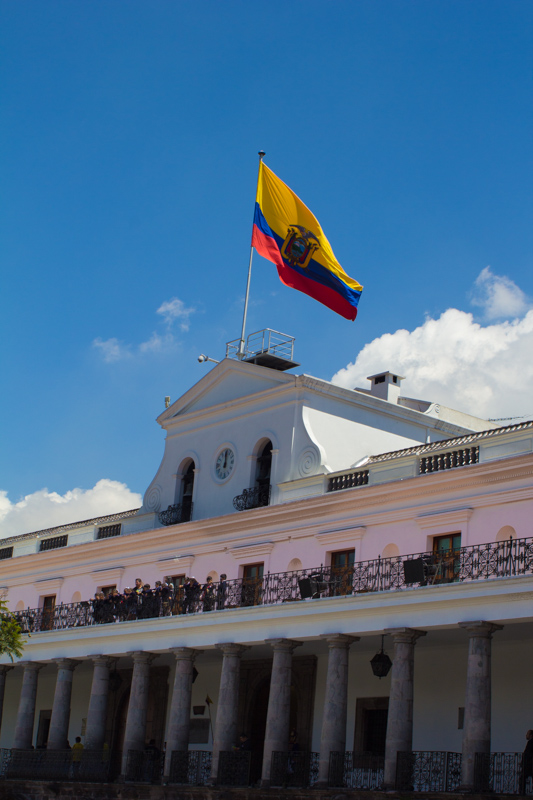
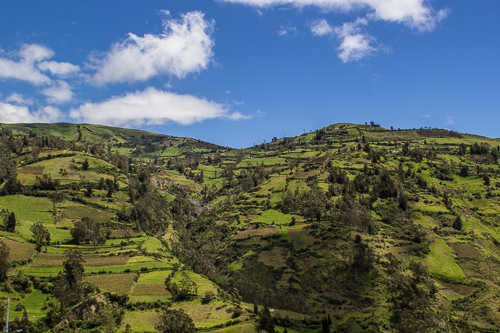
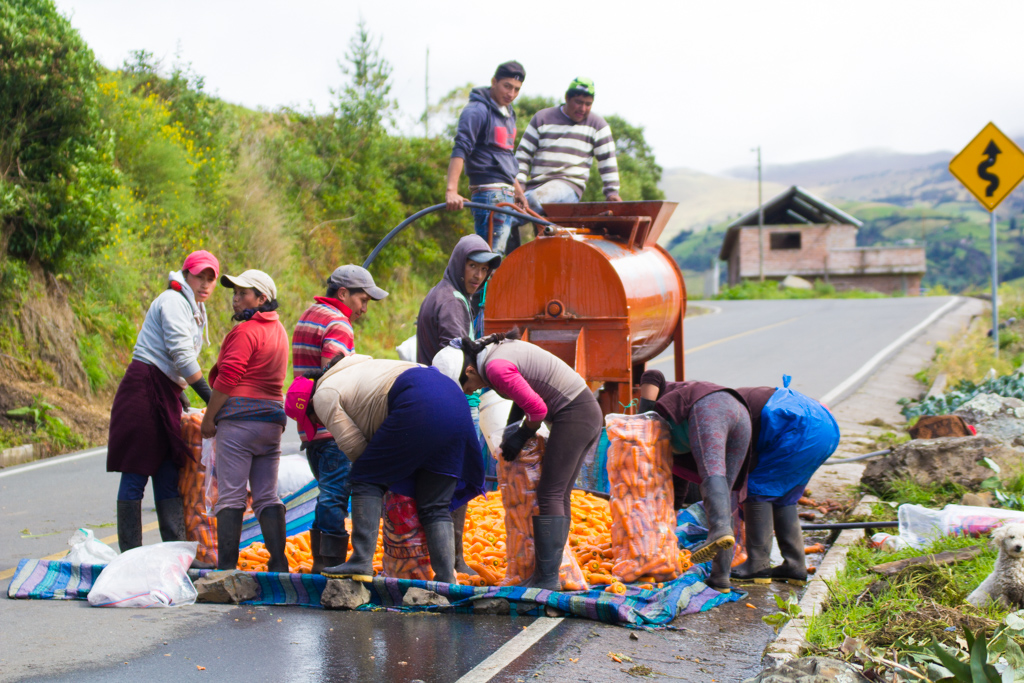
From the historic city of Quito it was off to the adrenaline junkie community of Baños (The Baths), Ecuador. Baños got its name from the thermal baths that are located throughout the city but it has become an adventure center for young Europeans and North Americans. Activities include hang gliding, biking, mountain biking, volcano climbing, rock climbing and white water rafting. Baños is not far from the Ecuador Amazon region so 3-5 day jungle trips are also available. We are adventurous but not as much as 20 somethings. So, we rented bicycles, began at the top of a mountain and rode it down and then through a beautiful mountain valley that is known for its waterfalls. Another day these two dogs joined us for a 4 hour hike in the mountains surrounding the city. When we arrived back in town we were met with calls of "Dave where have you been?" one of the dogs was apparently missed.
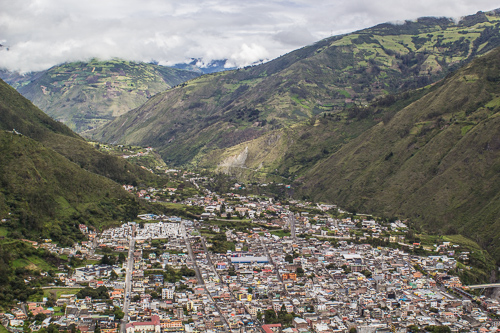
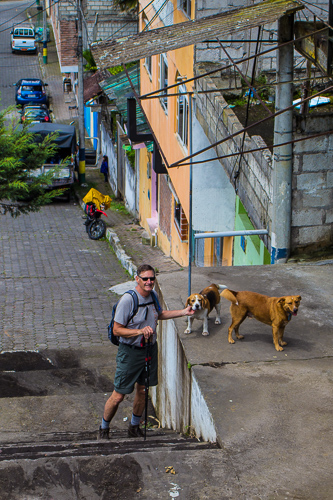
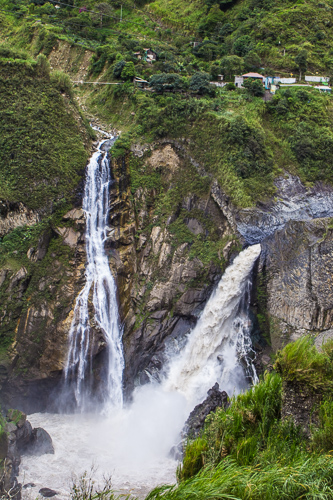
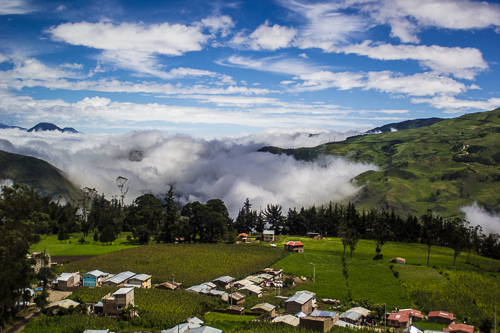
The farmland around Quito and throughout much of Ecuador is very amazing. On very steep mountainsides there are fields planted. How do they do that? While looking for a hiking trail outside of Riobamba, a “county precinct” government official offered us a ride back to Riobamba. We asked about some tractors and farm equipment used on the small plots of land. He explained a farmer could rent a tractor with the tractor operator for $14/hour. This makes the land much more productive than trying to till the land with mules. We saw a carrot farm that was taking their crop to market: for $13/hour the farmer rented the carrot washing processor to get their product into town. Quite innovative, no?
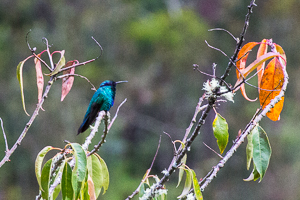
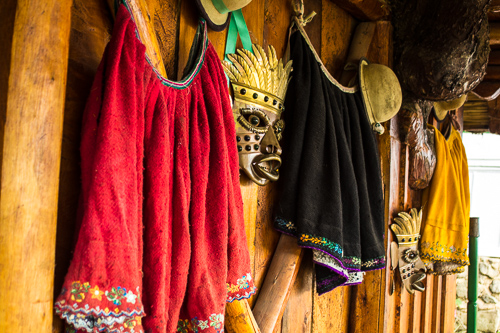
From Baños we traversed some of the Andes. That is code for: “A long and slow day on a bus.” We were so high in the mountains that many times we looked down on the clouds. The scenery was spectacular but we were glad when we got off the bus to visit the Ingapirca Inca ruins. Ingapirca is not as comprehensive as Machu Pichu but it was interesting and Ecuador’s best Inca site. Originally built by the Cañari peoples, the Incas took over the site in the 1500’s. Unfortunately the Spanish conquerors hauled away much of the rocks used in the building of their own houses. The largest building, known as ‘The Temple of the Sun’, was originally used for ceremonies and solar observations. This was our first stop in what was primarily indigenous territory. We had seen some traditional Indian clothing worn previously but here it was the norm not the exception.
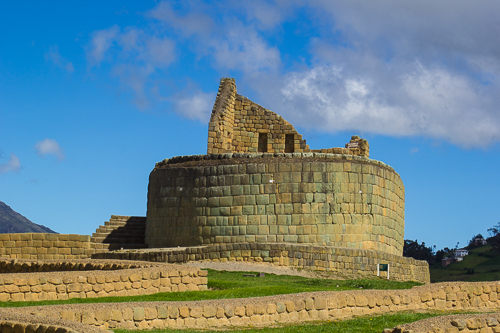
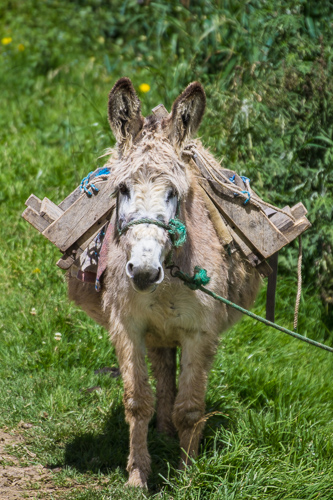
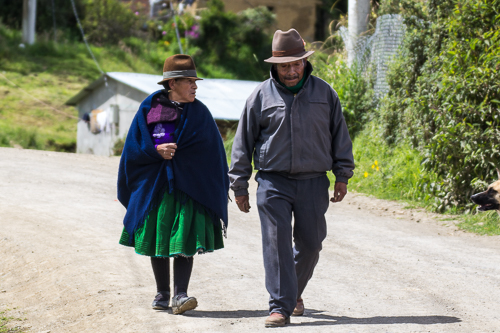
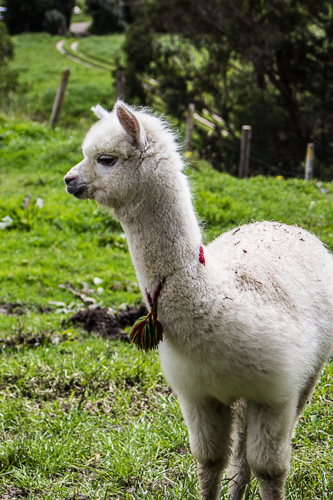
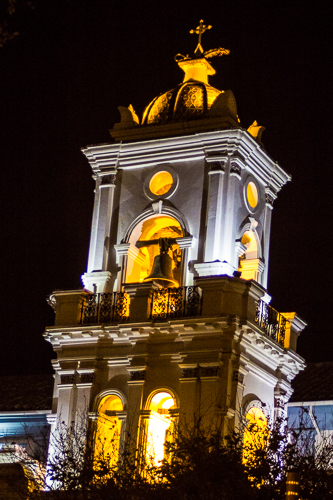
From the tiny village of Ingapirca it was off to the big city of Cuenca (pop. 332,000; elevation: 8,606’). The city is very beautiful and surrounded by much taller mountains. Cuenca is considered to have the most European inspired architecture of Ecuador. A surprising amount of retired Americans (around 7,000) live in Cuenca. We found this perplexing since living in a big city seemed at odds with a ‘get away from it all and move to Ecuador’ viewpoint.
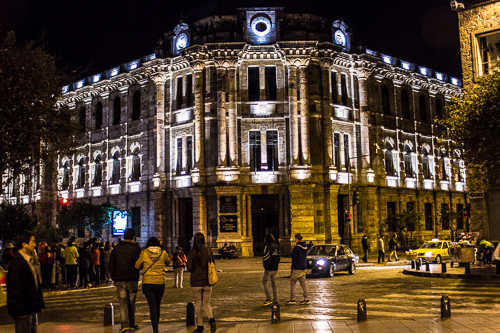
We enjoyed our short visit to Cuenca with hikes in the surrounding mountains (one along this road of intricately laid river stones) and local food dishes like chancho (pork) and cuy (guinea pigs).
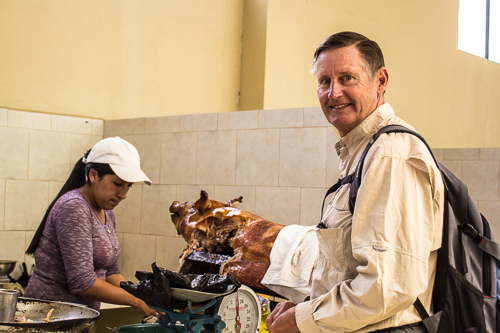
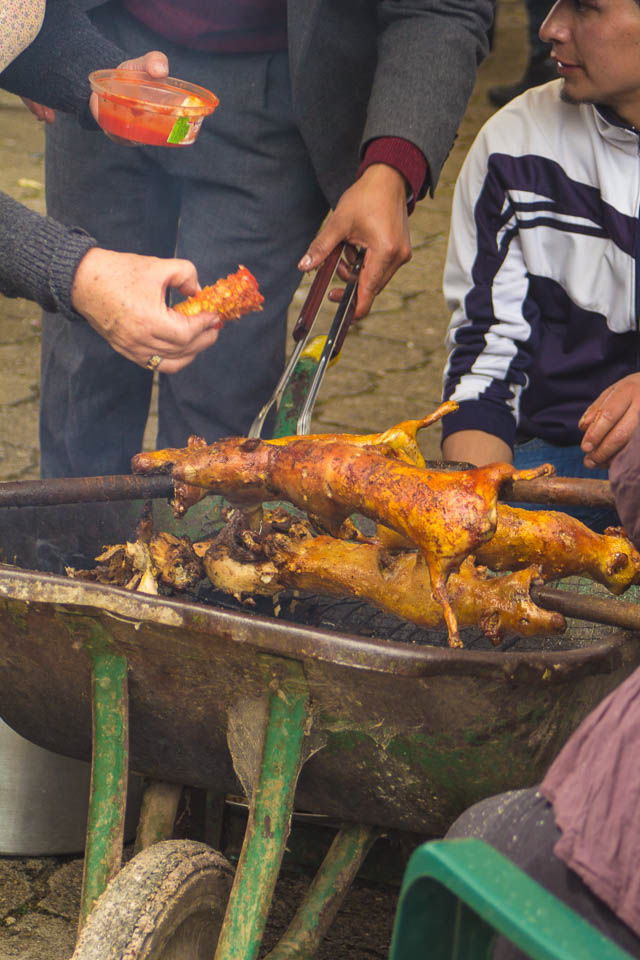
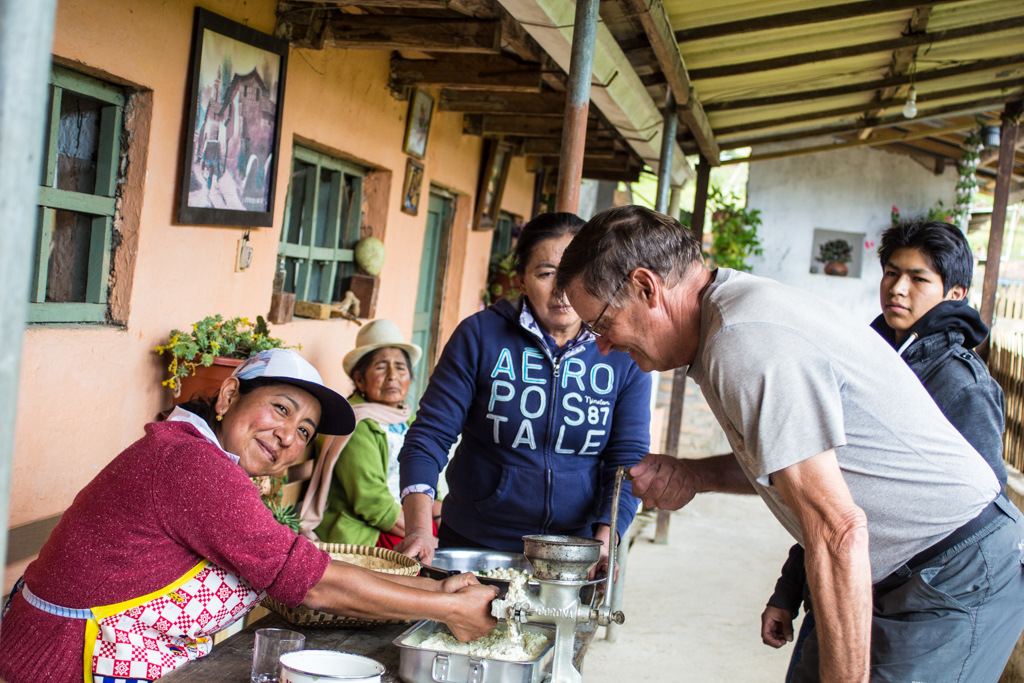
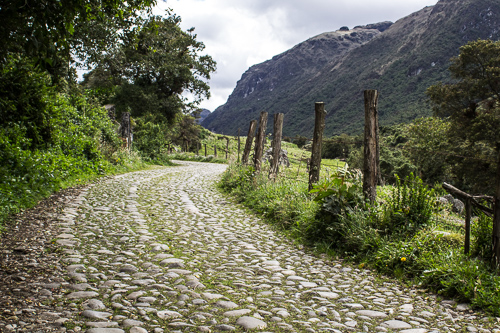
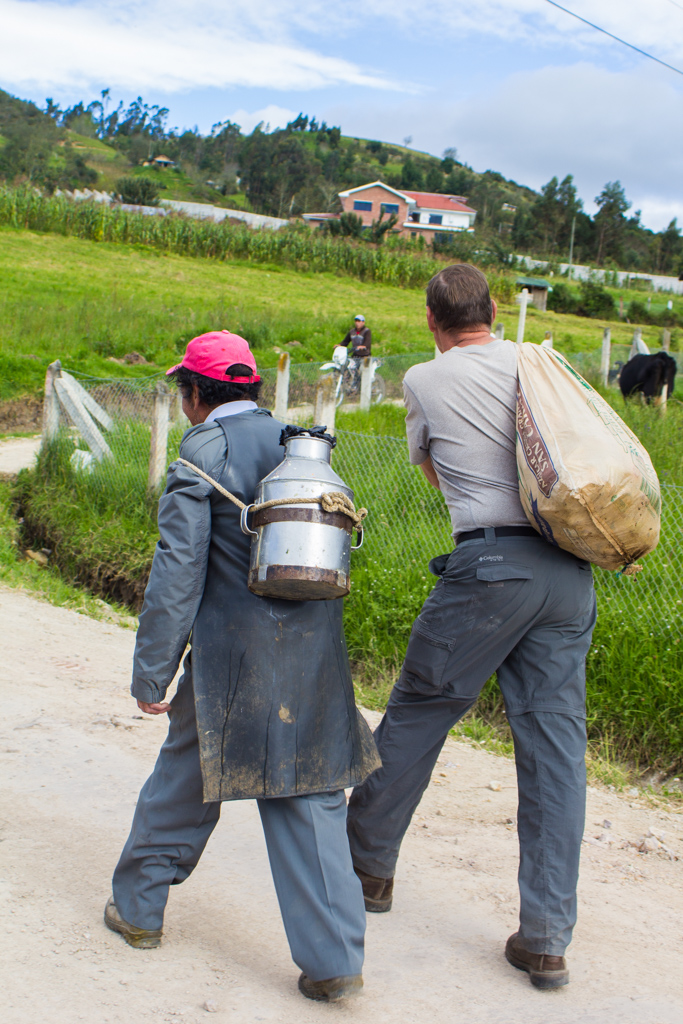
One of our most interesting and interactive days in Ecuador was spent in Jima, a tiny village, about a two hour bus ride up a dirt road. We were certainly off the tourist trail when in Jima so we started asking for hiking information at the only restaurant. One thing led to another and soon Nancy joined us at our table. Nancy is a member of a local group that is trying to promote Jima tourism. She suggested we go for a short hike and then join some friends and family to make humitas.
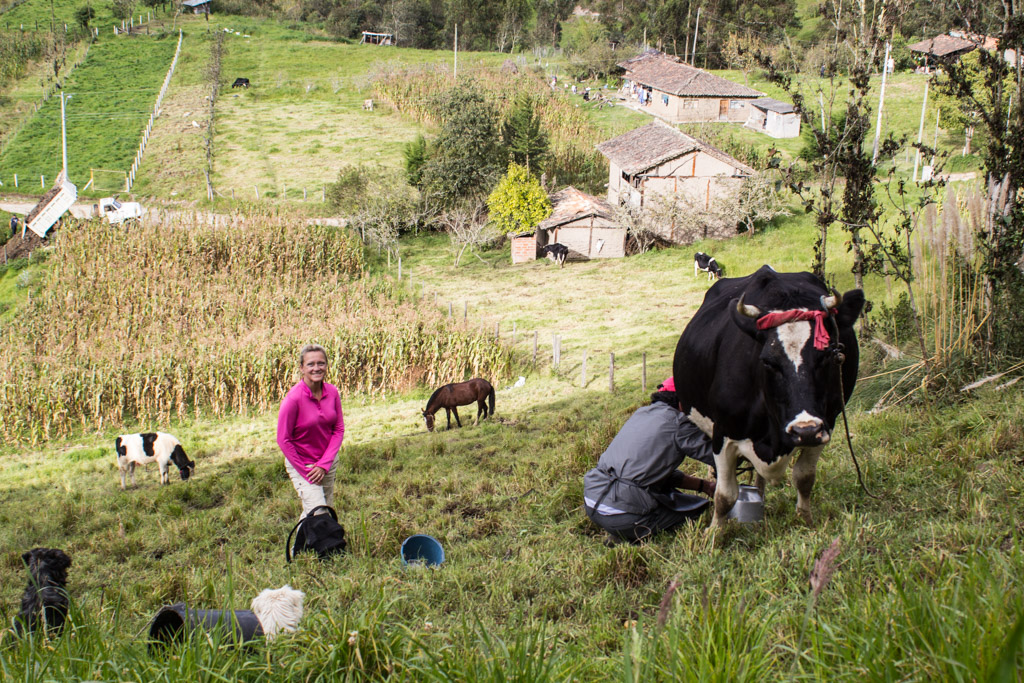
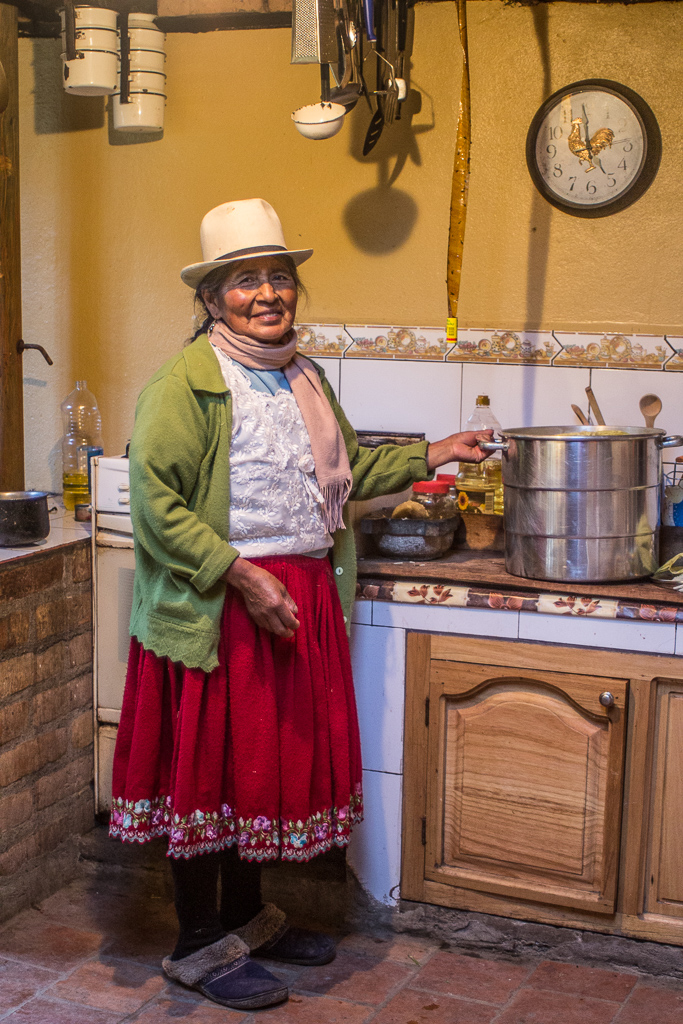
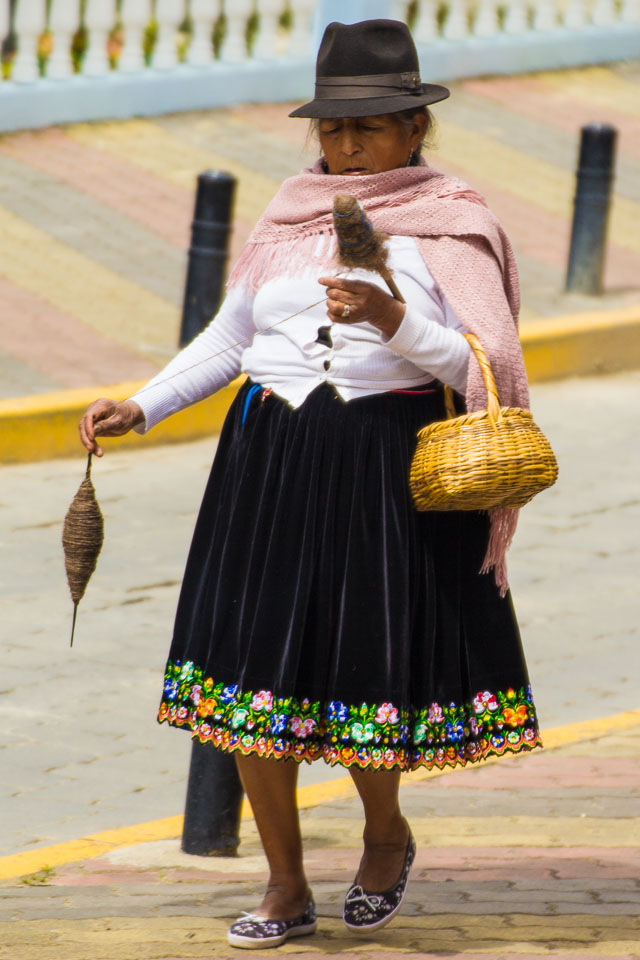
Humitas are a Native American meal from pre-Hispanic times and popular throughout South America. For us, they are a healthy version of the Mexican tamale. The ingredients are freshly ground corn, egg yolks & whipped egg whites, cheese, green onion, salt, cinnamon and cardamom. The mash is then spread on corn silks (husks) and steamed. Unlike Mexican tamales, there is no meat or lard used. Humitas are fluffy and are usually served with coffee.
It was a lot of fun to make humitas under the watchful eye of ‘grandma’ who had the final say about everything. While the humitas cooked we joined Nancy’s father to feed their pig some rotten apples picked off the ground and to milk their cow. Then we got to sample the fruits of our labor by sitting down to coffee and humitas with the family. It was a great memory.
It was a lot of fun to make humitas under the watchful eye of ‘grandma’ who had the final say about everything. While the humitas cooked we joined Nancy’s father to feed their pig some rotten apples picked off the ground and to milk their cow. Then we got to sample the fruits of our labor by sitting down to coffee and humitas with the family. It was a great memory.
I love everything about this photo!!! The shoes, the skirt, the hanging utensils, the rooster clock, the proud/humble expression, the arthritic clinch of the hand.......
The following day we took the bus down the mountain and stood on the side of the main highway to wait for a southbound bus. In true Ecuador fashion, we only had to wait about 5 minutes for a bus to our next village, Saraguro. During any wait in this region you will come across women spinning yarn as they go about their daily commute, very efficient.
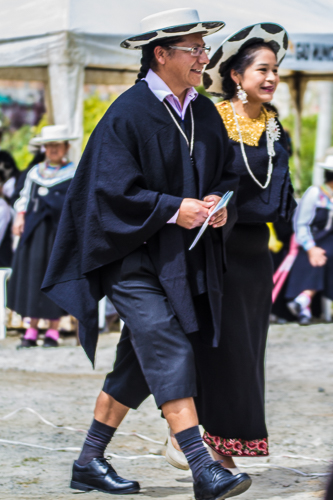
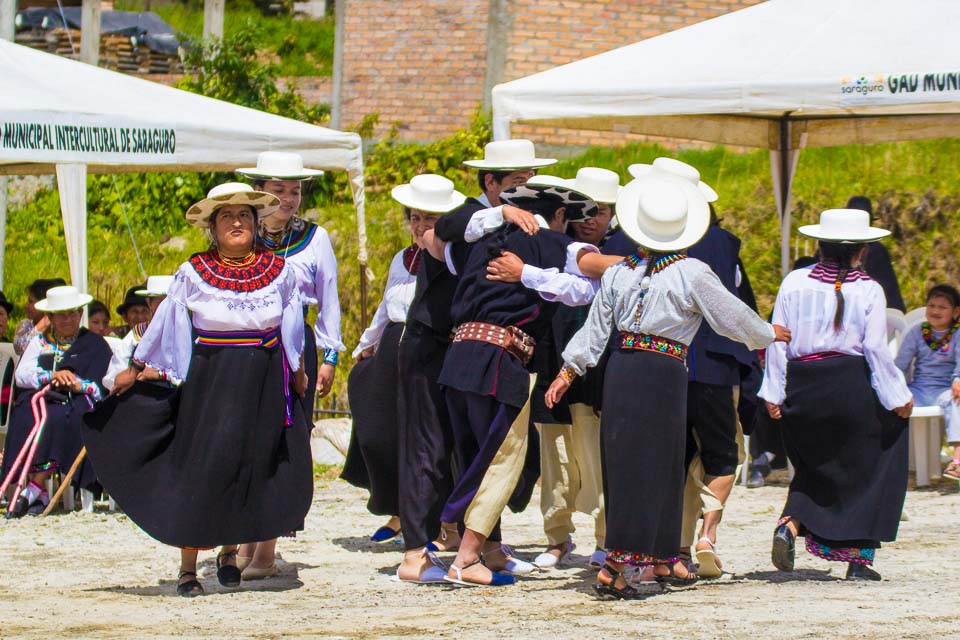
Saraguro is the center of the prosperous and proud Saraguro indigenous culture. They originally lived in Peru but were forced by the Incas to relocate here in the 1470’s. Traditional women’s Saraguro dress includes a wide brimmed white hat for formal occasions, felt hats for everyday, long pleated skirt, ornate pins called tupus and elaborate beaded collars known as chakiras. Men wear fedora-like hats, black ponchos and knee length black shorts. You could, and we did, spend hours in the main square people watching.
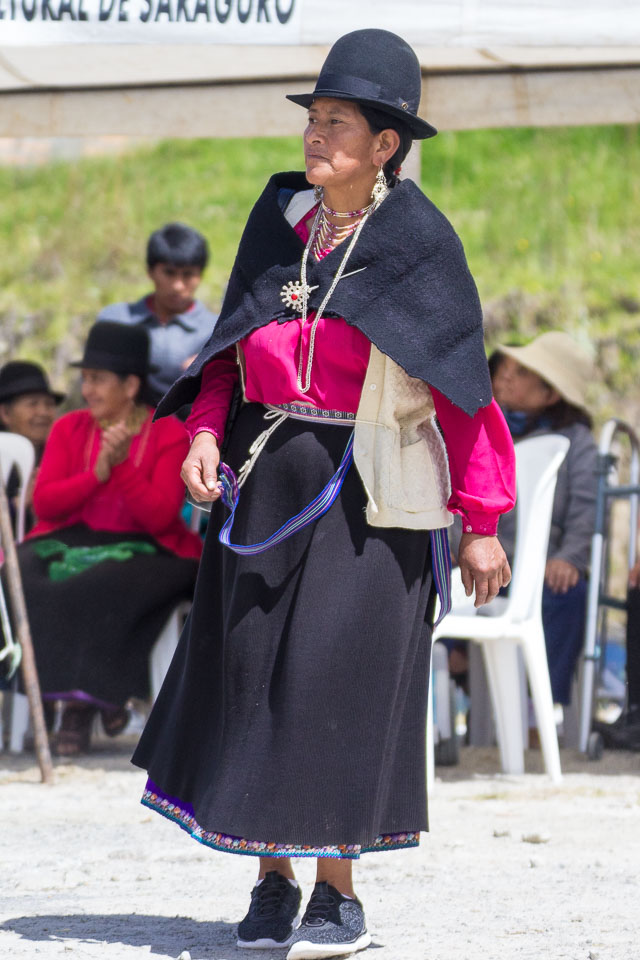
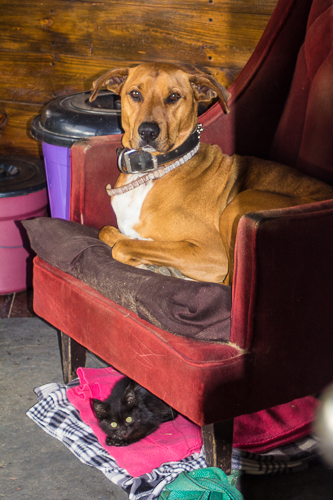

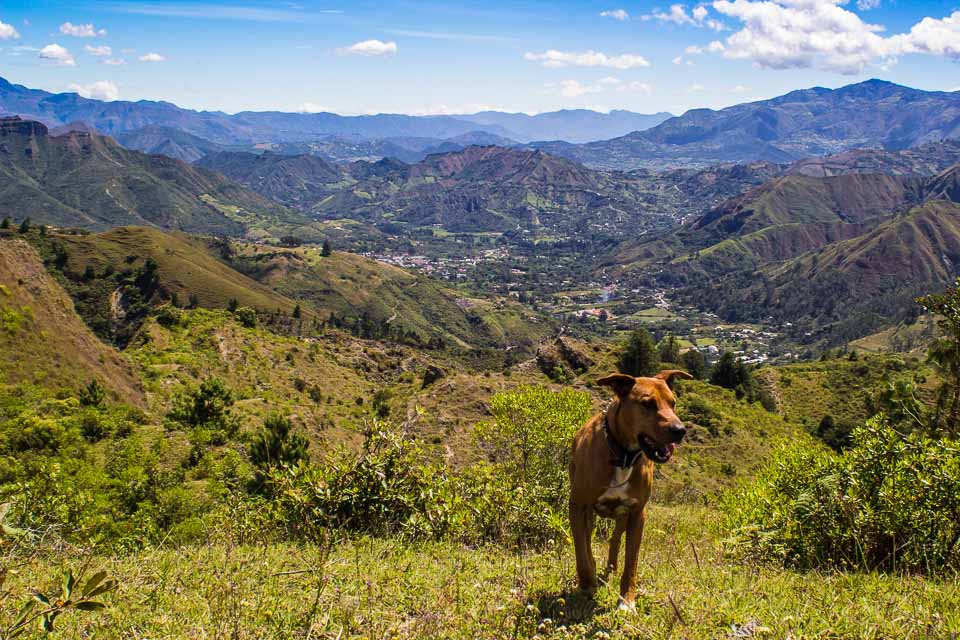
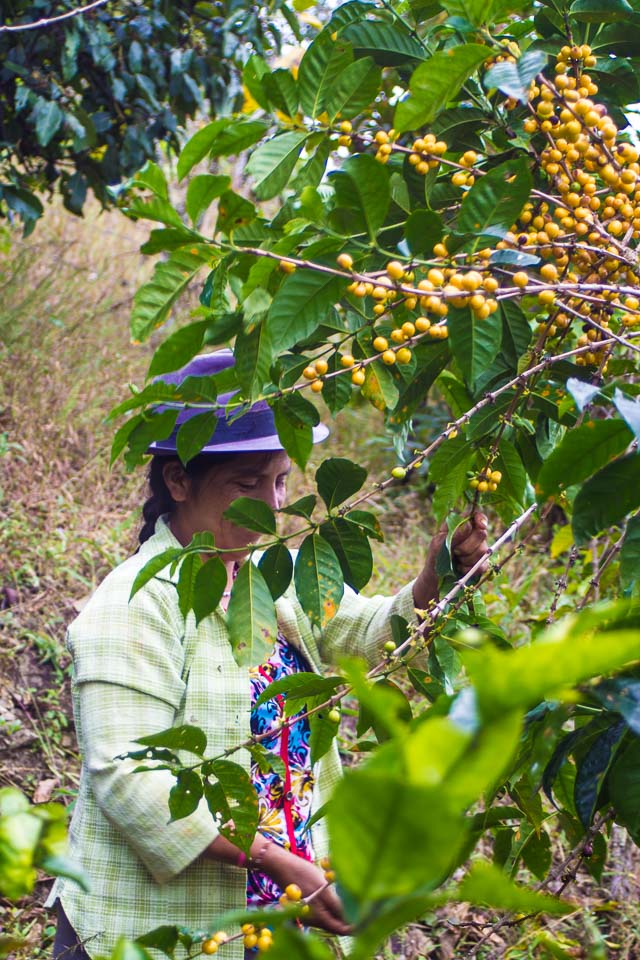
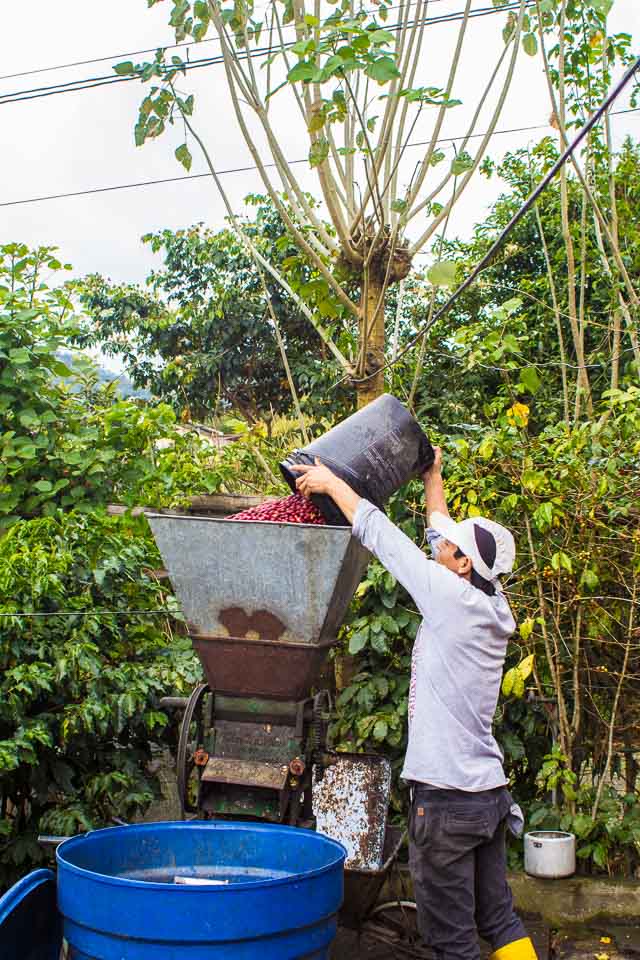
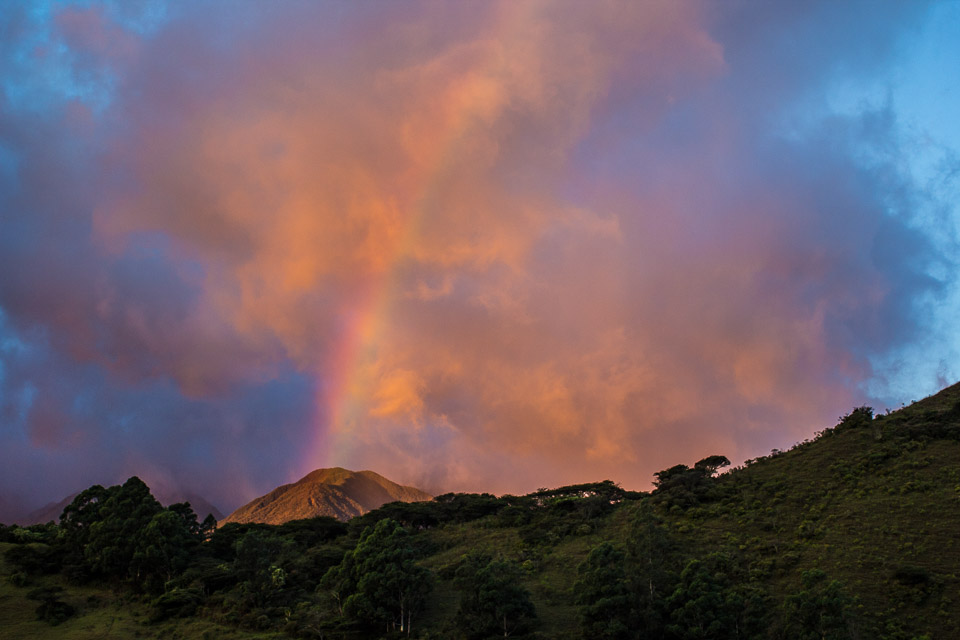
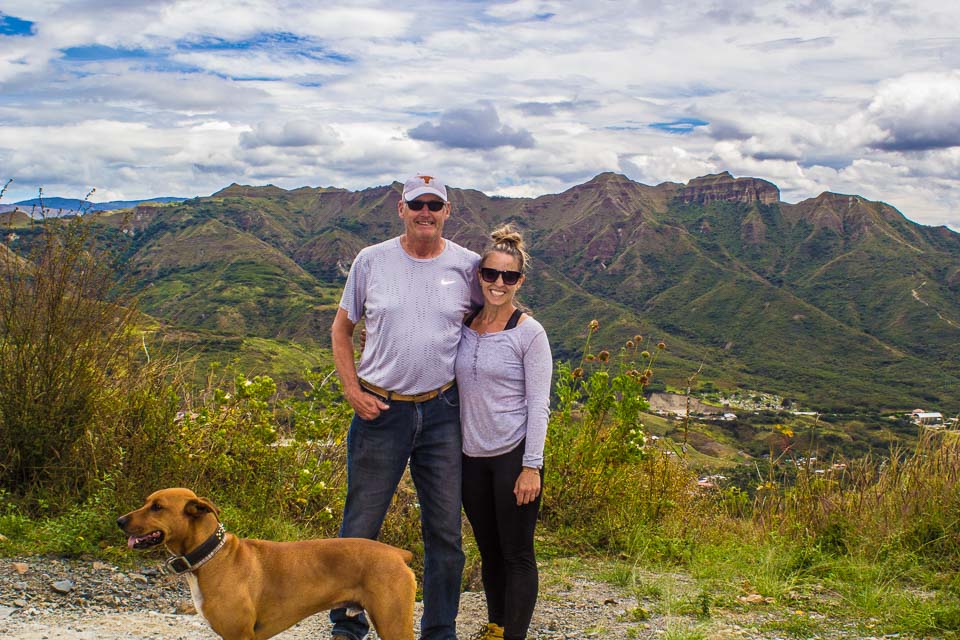
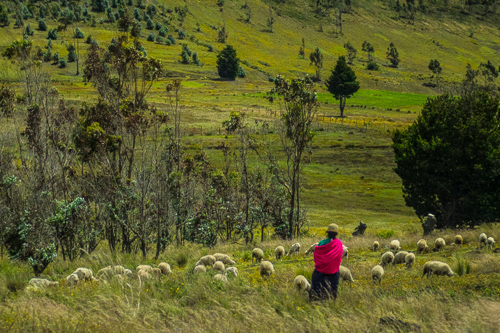
By June 1st we had spent 3 ½ months traveling throughout South America (Chile, Argentina, Uruguay and Ecuador). While a fantastic experience, living in ever changing hostels can be exhaustive. Our final 3 months (June/July/August) will be a drastic and welcome change.
We are living on a mountain top looking down on the Sacred Valley taking care of a lovable dog, a young kitten and a roost of chickens. The days are usually in the low 70’sF and at night it cools to the lower 50’sF (we miss a lot of things in Texas but not S. TX summers). We overlook the maintenance of the house along with a small coffee plantation. We tend to be about as busy as we want to be and the house comes with three workers who do all the heavy lifting.
We have been here a month and we still have not gotten accustomed to the beauty and the stunning views.
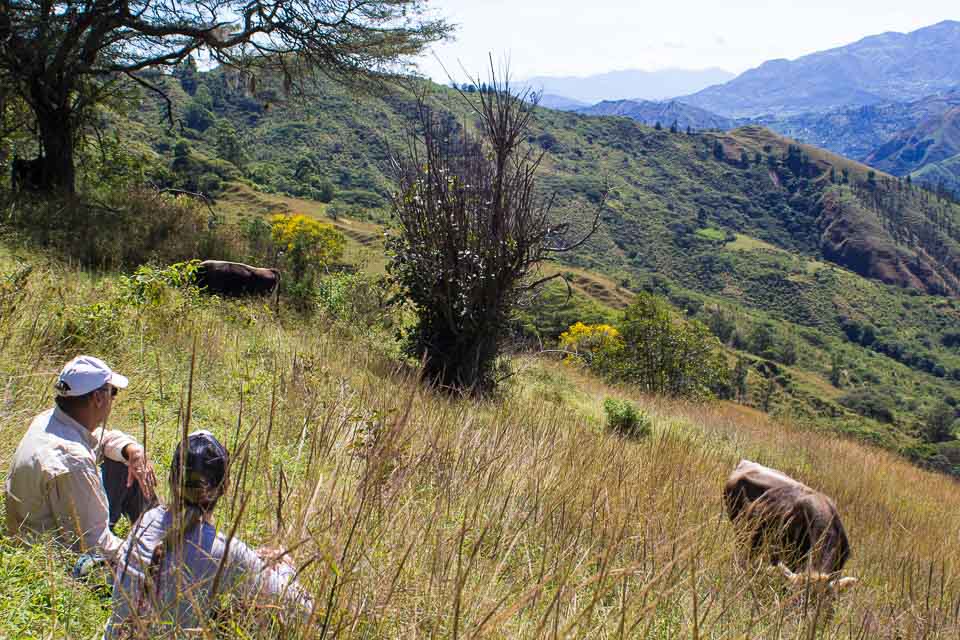
What could make this setting even more perfect? Have niece, Kimberly, come for a visit! Kim spent 5 days with us and we had a lot of fun hiking, exploring, cooking meals together and generally hang out. Her trip was much too short but it was a wonderful experience for all of us.
From the mountains of Ecuador until the next blog update,
Brian and JoDon
Brian and JoDon





